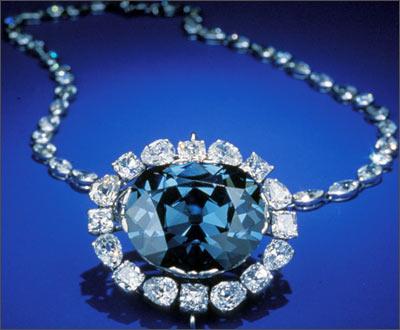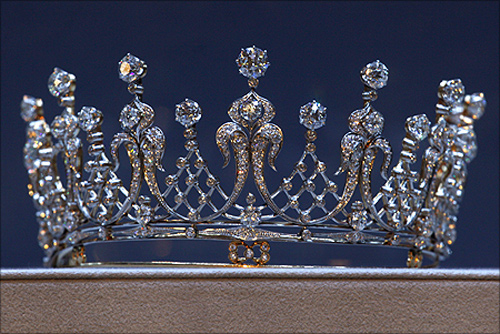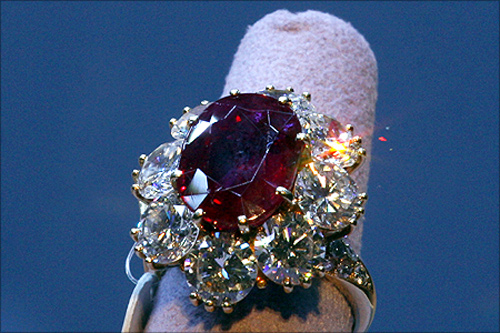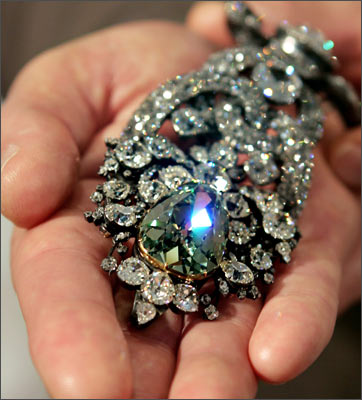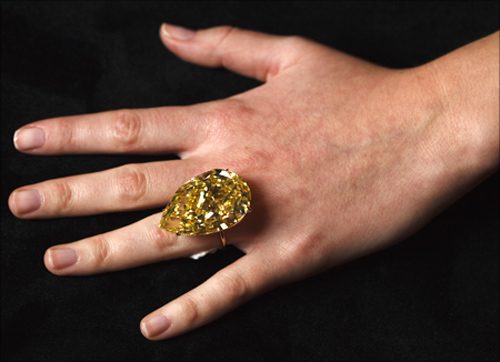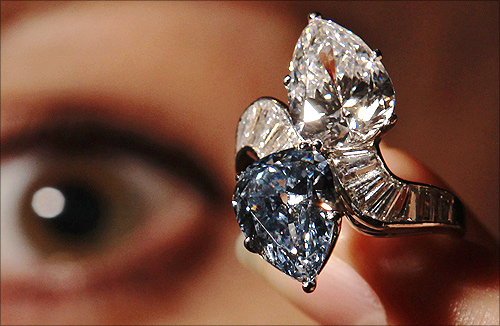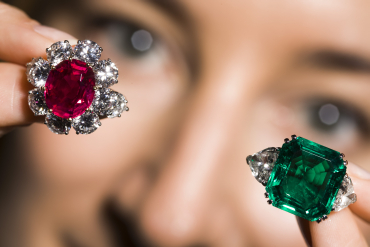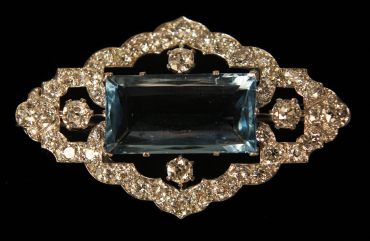 | « Back to article | Print this article |
10 richest diamond mines in the world
Diamonds are forever, goes the adage, however cliched.
Value of a diamonds is measured on the basis of four Cs -- carat, cut, color, and clarity.
In India, most diamond mines were depleted decades ago and the country is no longer a source for rough diamonds.
However, the country has one active diamond mine at Panna, in Madhya Pradesh, which is run by the state-owned National Mineral Development Corporation.
DeBeers India is also prospecting in Madhya Pradesh, Chhattisgarh, Karnataka, Andhra Pradesh, and Tamil Nadu for diamonds.
Let us have a look at 10 richest diamond mines in the world. . .
10 richest diamond mines in the world
1. Jwaneng
- Carats: 11.5 million (2009)
- Location: Botswana
Jwaneng is owned by Debswana, and the mine was opened in 1982. It now produces 60 per cent to 70 per cent of Debswana's total earnings. De Beers claims Jwaneng is the richest mine in the world. In 2009, the mine treated 8.2 million metric tonnes of rock to produce 11.5 million carats.
That's less than 1.5 carats per metric tonne of rock.
Click NEXT for more. . .
10 richest diamond mines in the world
2. Argyle
- Carats: 9.8 million (2010)
- Location: Australia
The Argyle mine is located in northwest Australia and is owned and operated by Rio Tinto.
The mine began production in 1985 and has produced more than 750 million carats through 2010.
The mine is the world's largest producer of pink diamonds, even though the Argyle Pinks, as they are known, account for just 0.01 per cent of production.
The Argyle mine produced 9.8 million carats in 2010.
Click NEXT for more. . .
10 richest diamond mines in the world
3. Orapa
- Carats: 9.53 million (2010)
- Location: Botswana
Orapa is another Debswana-owned mine. The mine was opened in 1971 and is an open-pit mine from which nearly 13 million metric tonnes of rock was processed in 2010, or about one metric tonne for every 1.3 carats.
The Orapa mine produced 9.53 million carats in 2010.
Click NEXT for more. . .
10 richest diamond mines in the world
4. Catoca
- Carats: 7.5 million (2009)
- Location: Angola
The Catoca mine is located in Angola and is owned by a consortium that includes Russia's Alrosa, Brazil's Odebrecht, Israel's Daumonty and Angola's state-owned mining company.
The mine went into production in 1997 and claims to be the world's fourth-largest kimberlite pipe, the geological formation from which most of the world's diamonds are mined.
The mine is expected to produce 60 million carats over its lifetime, about 35 per cent of which are gem quality.
Production in 2009 totalled 7.5 million carats.
Click NEXT for more. . .
10 richest diamond mines in the world
5. Diavik
- Carats: 6.5 million (2010)
- Location: Canada
The Diavik mine is located in Canada's Northwest Territories.
Rio Tinto owns 60 per cent interest in Diavik and is the mine's operator.
The mine went into production in 2003 as an open-pit operation that will be transitioned to a fully underground mine by next year.
The kimberlite deposits are small, but produce high-grade gem quality stones. The Diavik mine produced 6.5 million carats in 2010.
Click NEXT for more. . .
10 richest diamond mines in the world
6. Venetia
- Carats: 4.3 million (2010)
- Location: South Africa
South Africa's Venetia mine is owned and operated by De Beers.
The open-pit mine began production in 1992 and now produces about 40 per cent of South African total diamond production.
The mine processed more than four million metric tonnes of rock in 2010, giving a yield of about 1.1 carats/metric tonne.
The Venetia mine produced about 4.3 million carats in 2010.
Click NEXT for more. . .
10 richest diamond mines in the world
7. Ekati
- Carats: 3 million (2010)
- Location: Canada
The Ekati mine in Canada's Northwest Territories is 80per cent-owned by BHP Billiton.
The open-pit mine began operations in 1998 and processed 4.93 million metric tonnes of rock in 2010, yielding less than one carat/metric tonne of diamonds.
The Ekati mine produces about three per cent of the world's annual volume of diamonds by weight and nine per cent of value.
BHP estimates that Ekati contains about 0.3 carats/metric ton of rock. In 2010, Ekati produced three million carats.
Click on NEXT for more. . .
10 richest diamond mines in the world
8. Finsch
- Carats: 1.3 million (2010)
- Location: South Africa
The Finsch open-pit mine in South Africa was once owned by De Beers, but is now owned by independent and privately held Petra Diamonds.
The mine began operations in 1978, is South Africa's second-largest by production and is estimated to have produced 1.3 million carats in 2010.
Petra estimates 26.6 million carats remain to be produced.
Click NEXT for more. . .
10 richest diamond mines in the world
9. Letlhakane
- Carats: 1.2 million (2010)
- Location: Botswana
The Letlhakane mine is a Debswana property, a 50-50 joint venture between De Beers and the government of Botswana.
It went into production in 1975.
The open-pit mine processed 3.3 million metric tonnes of rock in 2010 and produced 1.2 million carats.
This is the deepest of the Debswana-owned mines and is located near the Orapa mine.
Click NEXT for more. . .
10 richest diamond mines in the world
10. Kimberley
- Carats: 100,000 (2010)
- Location: South Africa
South Africa's Kimberley mine first went into production in 1871. The original mine closed in 1914 and the underground mine closed in 1995.
De Beers, the original owner, sold underground mining rights to Petra in 2007, and Petra produced about 100,000 carats from the mine in 2010.
De Beers is re-treating the dumps on the surface and recovered 823,000 carats in 2010 from nearly 5.5 million tonnes of rock.
